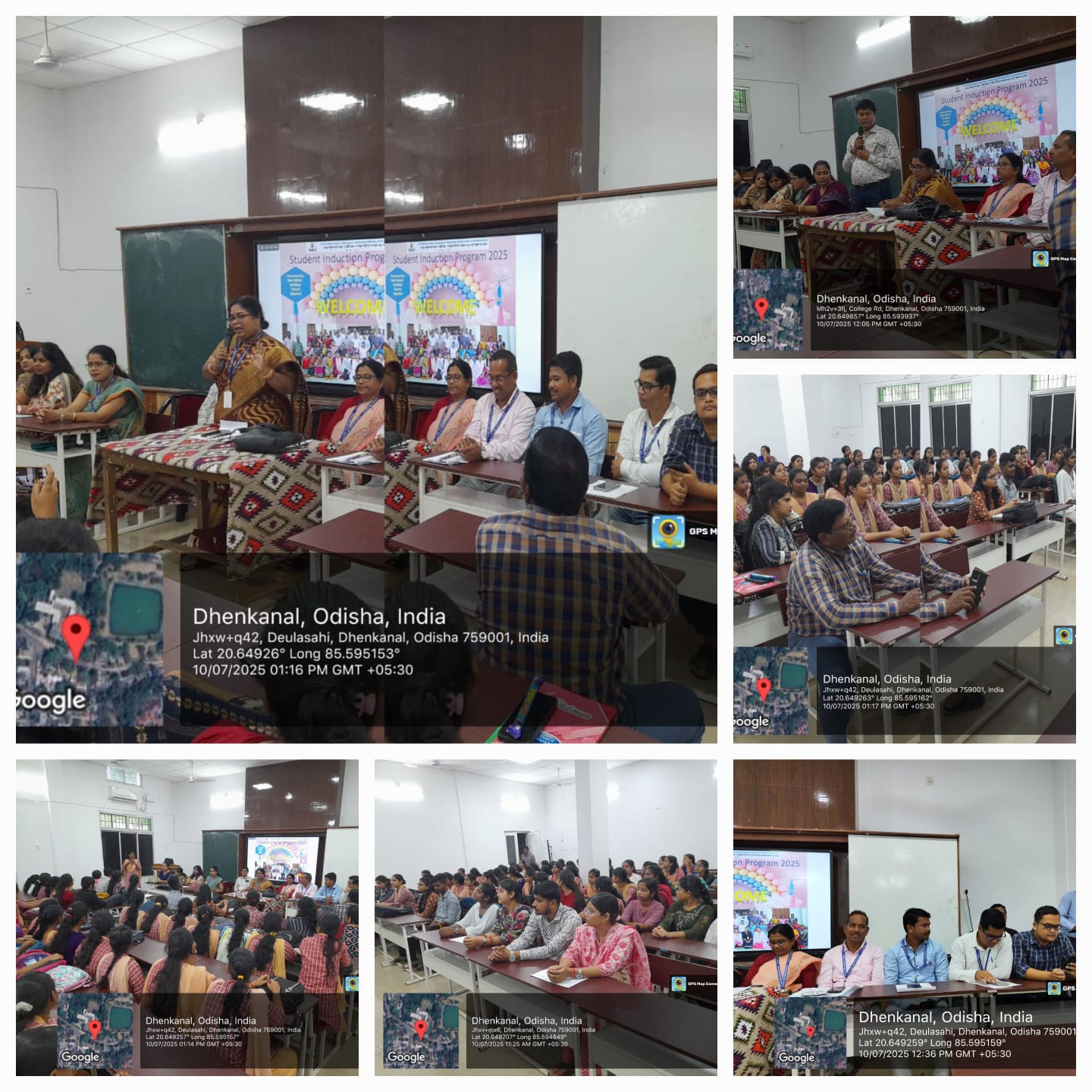The government is prioritizing a citizen-centric approach for a developed Bharat, ensuring active participation from citizens in the development process. CPGRAMS (Centralized Public Grievance Redress and Monitoring System) plays a key role in bridging the gap between citizens and the government by swiftly addressing their concerns. From 2022 to 2024, CPGRAMS successfully resolved over 70 lakh grievances, helping to create a more responsive and efficient India.
Efficient Grievance Resolution with CPGRAMS[1]
CPGRAMS (Centralized Public Grievance Redress and Monitoring System), developed and monitored by the Department of Administrative Reforms and Public Grievances (DARPG), is an online platform available 24/7 that connects all Ministries and Departments of India and the States. Citizens can file complaints through the web portal, the mobile app on the Google Play Store, or the UMANG app. Each complaint receives a unique registration ID, allowing users to track its progress. Additionally, the ‘My Grievance’ app serves as an independent platform for filing and tracking complaints.
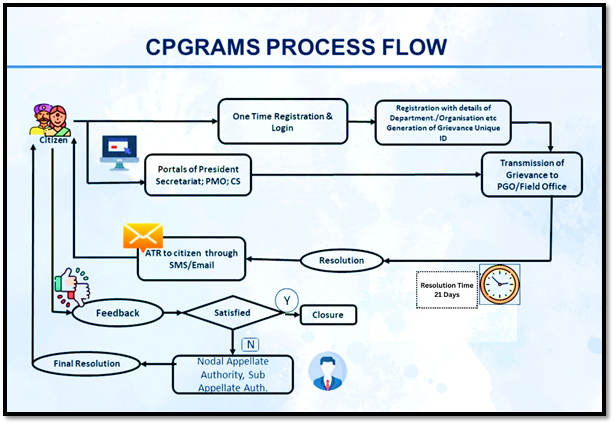
If a citizen is dissatisfied with the resolution, they can file an appeal once the grievance is closed. If feedback is marked as “Poor,” the appeal option is activated. Appeals can be tracked using the grievance registration number. Additionally, the Grievance Redressal timeline has been reduced from 30 to 21 days.
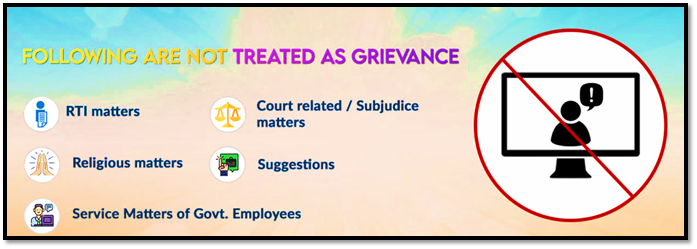
Guidelines for Effective Grievance Redressal[2]
The government has introduced clear guidelines to improve grievance redressal, focusing on transparency, efficiency, and accountability. These guidelines ensure that grievances are resolved quickly and fairly. The 2024 Policy Guidelines highlight the government’s commitment to addressing grievances effectively and showcase the improvements made through the 10-step reform process.
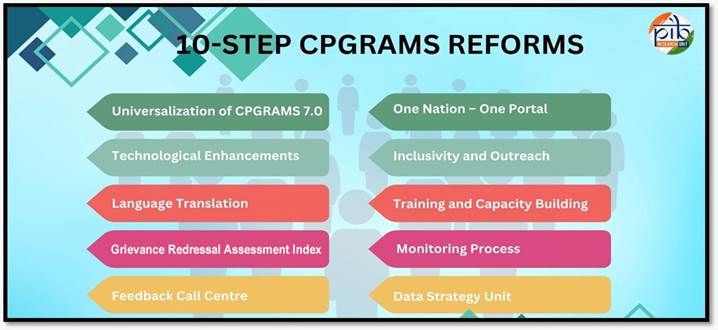
- Integrated Platform: CPGRAMS (www.pgportal.gov.in) serves as the central platform for filing grievances, offering a seamless user experience.
- Nodal Officers: Every Ministry/Department has appointed Nodal Officers to ensure timely and effective grievance resolution. Nodal Officers will handle grievance categorization, monitor pendency, analyze feedback, and supervise Redressal Officers.
- Grievance Cells: Dedicated grievance cells in each Ministry/Department are staffed with knowledgeable personnel for better service.
- Reduced Timelines: Grievance redressal must be completed within 21 days, with interim replies if more time is required.
- Escalation Process: Appellate officers and sub-nodal officers are in place to oversee grievance escalations within Ministries/Departments.
- Whole of Government Approach: A unified approach ensures that grievances are addressed effectively across all government bodies.
- Feedback System: Feedback is sent via SMS/email, with citizens able to file an appeal if dissatisfied with the resolution. AI-powered tools, such as the Tree Dashboard, analyze feedback to drive process improvements.
- Grievance Redressal Index: Monthly performance rankings of Ministries/Departments based on grievance redressal effectiveness.
- Training and Capacity Building: Grievance officers are trained under the SEVOTTAM scheme (Service Excellence through Total Quality Management) at State/UT Administrative Training Institutes.
- Regular Review: Senior officers regularly review grievance redressal performance and ensure stakeholder awareness.
These guidelines aim to enhance the grievance redressal system, ensuring quicker resolutions and better citizen engagement.
Key Achievements of CPGRAMS[3]
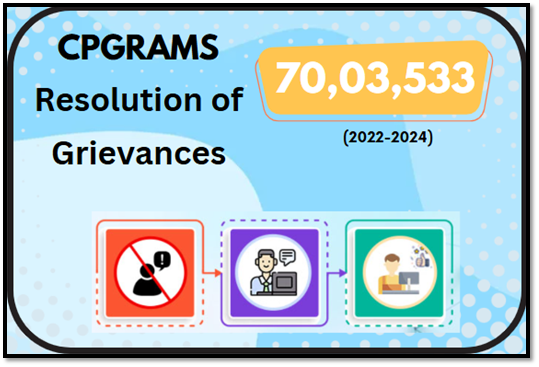
CPGRAMS now connects 92 Central Ministries, Departments, and Organizations with 36 States/UTs, offering a seamless platform supported by over 73,000 active subordinate users. With 96,295 organizations registered, CPGRAMS has significantly improved citizen engagement and service delivery. From 2022 to 2024, the system enabled the resolution of 70,03,533 grievances and mapped 1,03,183 Grievance Redressal Officers (GROs) as on 31 October 2024.
In December 2024, the Fourth Sushasan Saptah and Prashasan Gaon ki Ore Campaign acted as a catalyst for grievance redressal, aimed at resolving public grievances and improving service delivery across India. Held in over 700 districts from December 19-25, the campaign achieved the following milestones:
- 2,99,64,200 applications disposed under service delivery
- 14,84,990 grievances redressed on state portals
- 3,44,058 grievances redressed on CPGRAMS
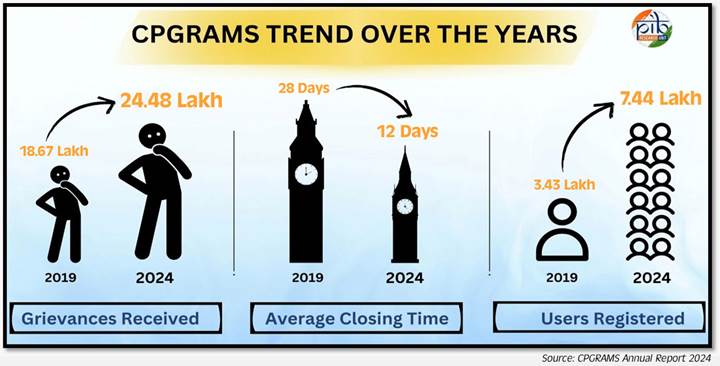
The Department of Administrative Reforms and Public Grievances (DARPG) is developing the NextGen CPGRAMS platform to improve grievance redressal. Building on CPGRAMS 7.0, it will offer features like grievance filing via WhatsApp/Chatbot, voice-to-text lodging, instant alerts, and auto-escalation. Grievance Redressal Officers will benefit from machine learning-based auto-replies and auto-populated reports. Monitoring bodies can track grievances by grouping, sector, and Ministry. NextGen CPGRAMS is set to launch on 1st July 2025, further enhancing the grievance resolution process.
CPGRAMS: Global Recognition and Citizen Impact[4]
CPGRAMS has garnered global recognition as a model of effective governance. At the Third Biennial Pan-Commonwealth Heads of Public Service Meeting in April 2024, the Commonwealth Secretariat highlighted it as a future-ready governance tool. The system has proven effective in addressing citizens’ grievances with swift resolutions and improved public safety.[5]
One such success story is that of Shri Amit Kumar, who filed a grievance regarding the delay in the reinstallation of his electricity meter despite paying the pending bill of ₹46,530 on June 28, 2024. His electricity connection was cut two years ago due to rental rates, and despite numerous complaints to the Consumer Grievance Redressal Forum UPCL Kumaon Zone in Haldwani, no action was initially taken. After filing the grievance on CPGRAMS, the meter was reinstalled within two days, and the sealing certificate was provided, resolving the issue promptly.
Conclusion
CPGRAMS has become a key tool in improving how the government addresses citizens issues. By simplifying the grievance process and ensuring quicker resolutions, it has built a stronger connection between the public and the government. With significant improvements in service delivery and global recognition for its effectiveness, CPGRAMS is helping India move towards a more responsive and citizen-focused government.
References
- https://pgportal.gov.in/
- https://pib.gov.in/PressReleaseIframePage.aspx?PRID=2048939
- https://pib.gov.in/PressReleasePage.aspx?PRID=2086061#:~:text=The%20Government%20introduced%20the%2010,and%20accessible%20to%20the%20Citizens.
- https://pib.gov.in/PressReleaseIframePage.aspx?PRID=2018818
- https://pib.gov.in/PressReleaseIframePage.aspx?PRID=2065117
- https://dopt.gov.in/sites/default/files/AR2023-24English.pdf
- https://darpg.gov.in/sites/default/files/CPGRAMS_Annual_Report_2024.pdf
- https://pib.gov.in/PressReleasePage.aspx?PRID=2088206
 Odisha news today, Latest Oriya News Bhubaneswar Online Odia news Portal
Odisha news today, Latest Oriya News Bhubaneswar Online Odia news Portal




